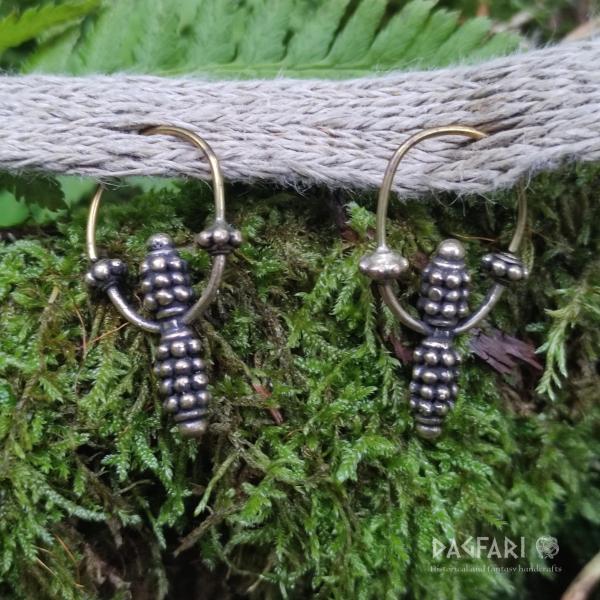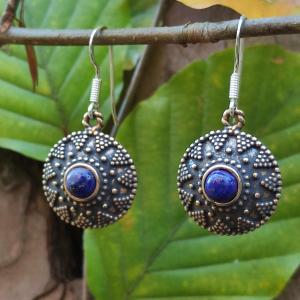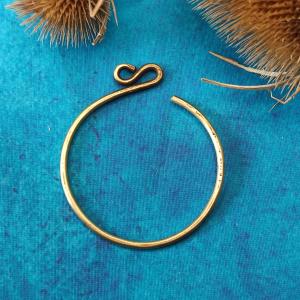Earrings - we know beautifully decorated pieces from imports, influenced by Byzantium and plain rings twisted almost on the knee, imported and local imitations. For girls and adult women, hung behind the ears and on the temples, on leather and fabric straps and silk bands or braided into the hair. They are found throughout the centuries and the ornate ones experience a real boom in the 9th-12th centuries. They were favoured by women from the Rhineland to Kievan Rus, from the Baltic to the Adriatic.
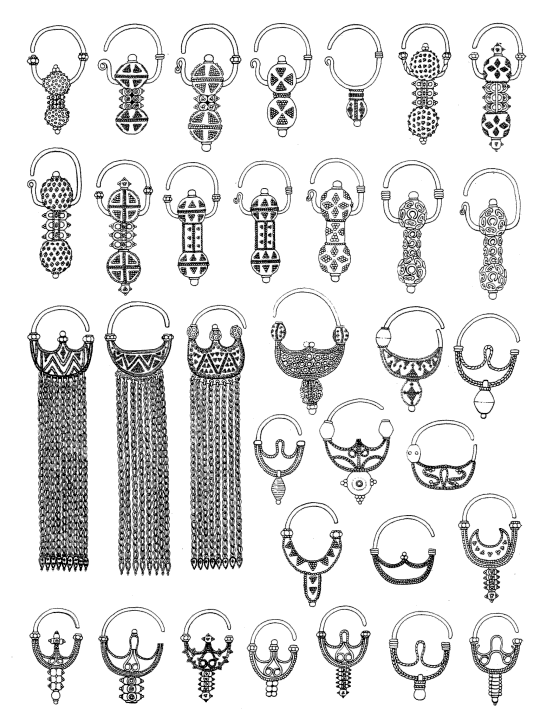
Why are they called earrings? They are alternatives to women's head ornaments from a time when they didn't pierce their ears. Their location in grave finds suggests just hanging on various headdresses, on the forehead and behind the ears, or braided into the hair. There were several reasons for this. Firstly hygiene, fashion and also the fact that a woman wearing jewellery of this type would have worn her head wrapped in a veil and her ears and normal earrings would not have been very visible. And a medieval woman, it was always a symbol of the wealth of the court and every man invested his money in his wife's jewelry to show it off.
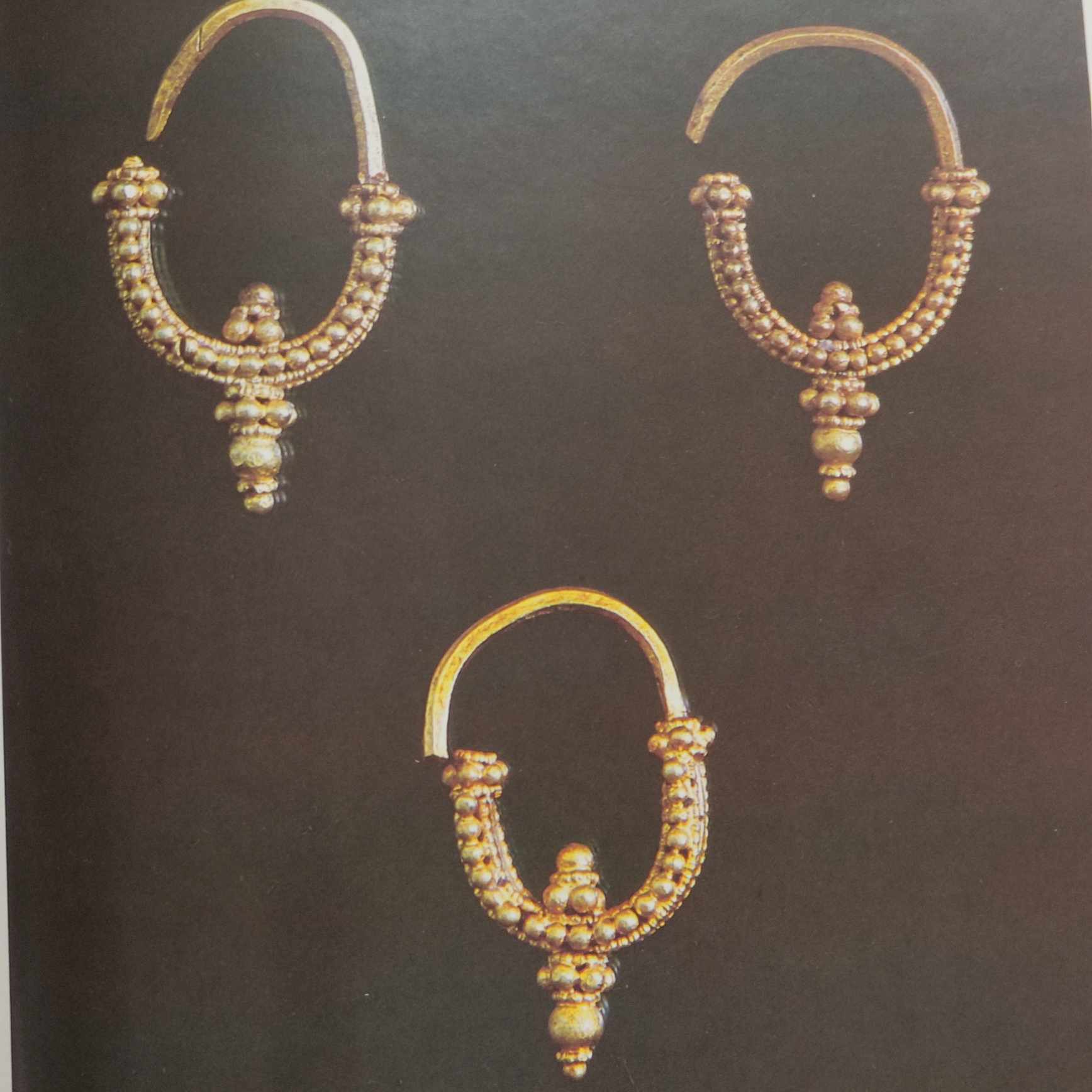
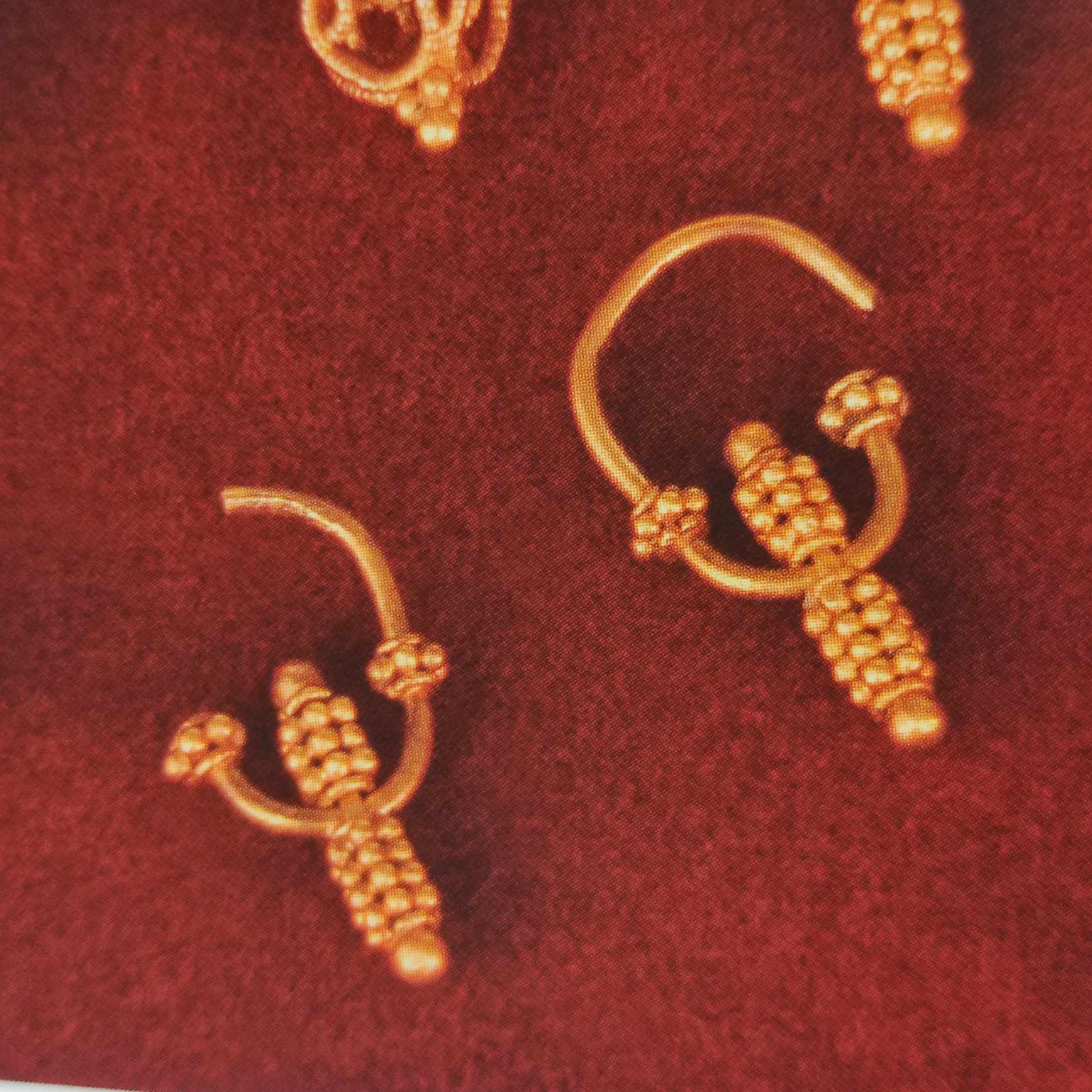
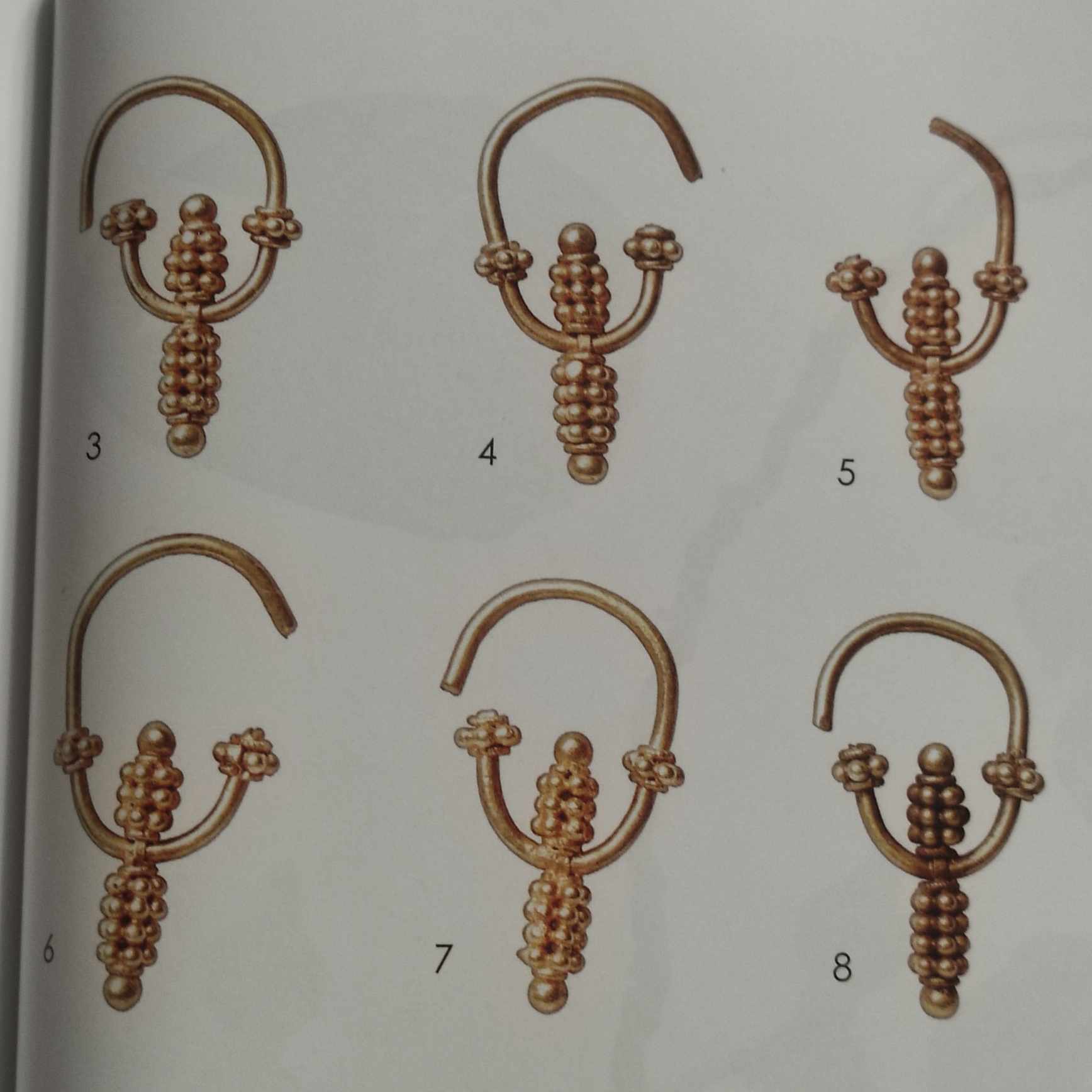

Staré Město, Na Valách, hrob 282/49
Our earrings won't embarrass even when worn in civilian clothes. For example, on the occasion of folklore celebrations.
The wire from which the hinge is made is firmly attached on one side only and can be easily inserted into the earhole and clicked back into the jewellery hole. However, they are designed to be firmly attached to headbands and the like, so please do not over-form the wire more times than necessary, as it may bend or break unnecessarily (a characteristic of all metals that bend back and forth many times in one place).
Price is per pair.
Size of one piece replica:
3,9 g
3,5 x 2 cm

